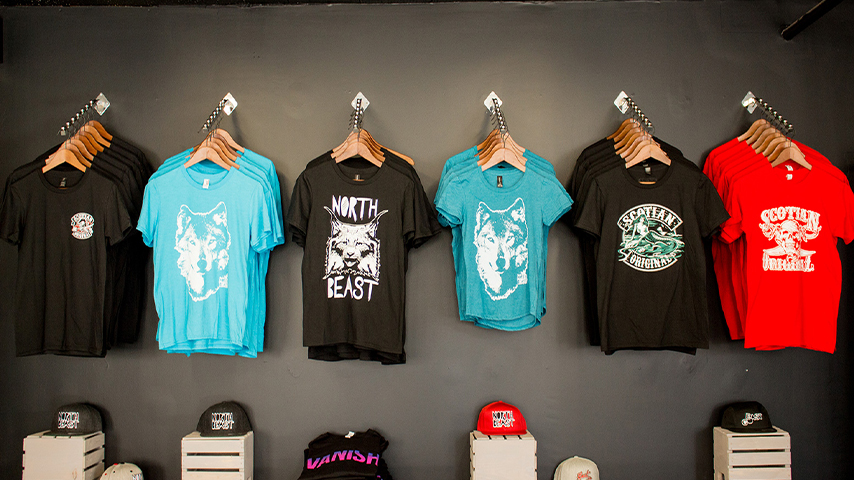Starting a custom T-shirt business can be an exciting and profitable venture. With the increasing demand for personalized and unique apparel, there’s a significant market for custom T-shirts. In this article custom t shirt printing Dallas will guide you through the steps to launch your own custom T-shirt business, covering everything from initial planning to marketing and growth strategies.
Research and Planning
Before diving into the custom T-shirt business, thorough research and planning are crucial. This phase involves understanding the market, identifying your niche, and creating a business plan.
Market Research:
- Identify Your Target Audience: Figure out who could buy from you. Are you targeting a specific age group, interest, or community?
- Analyze Competitors: Study existing custom T-shirt businesses. Find out what they excel in and where you might potentially fill up the gaps.
- Trends and Demands: Keep an eye on current fashion trends and popular themes in T-shirt designs.
Business Plan:
- Define Your Niche: Decide on the specific market segment you want to focus on. This could be custom T-shirts for sports teams, corporate events, pop culture fans, etc.
- Make a Plan: Write down all of your company objectives, both short- and long-term.
- Budget and Financing: Estimate your startup costs, including equipment, inventory, marketing, and other expenses. Think about the sources of funding for your company and decide if it will be investors, personal savings, or loans.
Design and Branding
Creating appealing designs and establishing a strong brand are key to attracting customers.
Design Creation:
- Hire a Designer or Use Design Tools: If you’re not a designer, consider hiring a professional. Alternatively, use graphic design tools like Adobe Illustrator, Photoshop, or online platforms like Canva.
- Design Portfolio: Create a portfolio of initial designs that represent your brand’s style and appeal to your target audience.
Branding:
- Brand Name and Logo: Choose a memorable brand name and create a distinctive logo.
- Brand Identity: Develop a consistent brand identity, including color schemes, fonts, and visual elements that will be used across your website, social media, and packaging.
Setting Up Your Online Store
An online store is essential for reaching a broad audience and facilitating sales.
Choose an E-commerce Platform:
- Shopify: User-friendly and offers numerous apps and integrations.
- WooCommerce: A flexible option for those familiar with WordPress.
- Etsy: Ideal for handmade and unique custom products.
Website Design:
- User Experience: Ensure your website is easy to navigate, with clear categories and product descriptions.
- Mobile-Friendly: Optimize your site for mobile users.
- Secure Payment Gateway: Offer multiple payment options and ensure transactions are secure.
Product Listings:
- High-Quality Images: Use professional photos of your T-shirts.
- Detailed Descriptions: Provide detailed descriptions of each design, including size options, fabric information, and care instructions.
- Pricing: Set competitive prices considering your costs, desired profit margin, and market rates.
Production Methods
Choosing the right production method is crucial for quality and efficiency.
Printing Methods:
- Screen Printing: Ideal for bulk orders and designs with few colors.
- Direct-to-Garment (DTG) Printing: Best for detailed designs and small batches.
- Heat Transfer Printing: Suitable for small orders and complex designs.
- Embroidery: Great for adding texture and a premium feel to your T-shirts.
Sourcing Materials:
- Quality Blanks: Purchase high-quality blank T-shirts from reputable suppliers.
- Inks and Transfers: Use high-quality inks and transfer materials to ensure vibrant and durable prints.
Equipment:
- Printer: Invest in a reliable printer based on your chosen printing method.
- Heat Press: Necessary for heat transfer printing and curing DTG prints.
- Workspace: Set up a dedicated workspace with enough room for equipment and inventory.
Marketing and Sales Strategies
To draw in and keep consumers, you need marketing that works.
Social Media Marketing:
- Platforms: Utilize platforms like Instagram, Facebook, and Pinterest to showcase your designs.
- Content: Post regularly, including photos of your T-shirts, behind-the-scenes content, and customer testimonials.
- Influencers: Collaborate with influencers who align with your brand to reach a broader audience.
Search Engine Optimization (SEO):
- Improve your website’s search engine ranks by optimizing it with relevant keywords.
- Blogging: Start a blog related to your niche to drive traffic to your site.
Email Marketing:
- Newsletter: Collect email addresses and send regular newsletters with updates, promotions, and new designs.
- Personalization: Personalize emails to enhance customer engagement.
Paid Advertising:
- Google Ads: Use Google Ads to target specific keywords and drive traffic to your site.
- Social Media Ads: Run targeted ads on social media platforms to reach your ideal customers.
Events and Pop-Ups:
- Local Markets: Participate in local markets and events to sell your T-shirts and increase brand awareness.
- Put up short-lived “pop-up shops” in heavily populated places.
Customer Service and Retention
The best way to keep clients coming back and attract new ones is to provide them with outstanding service.
Customer Support:
- Communication: Offer multiple channels for customer support, including email, phone, and live chat.
- Responsive: Respond to inquiries promptly and professionally.
Returns and Exchanges:
- Clear Policy: Have a clear and fair returns and exchanges policy.
- Easy Process: Make the process easy for customers to encourage trust and satisfaction.
Loyalty Programs:
- Rewards: Implement a loyalty program to reward repeat customers with discounts or free products.
- Engagement: Keep customers engaged with exclusive offers and early access to new designs.
Scaling Your Business
Plan for future growth by thinking about how to scale and extend your firm.
Diversification:
- New Products: Expand your product line to include other custom apparel like hoodies, hats, and accessories.
- Customization Options: Offer additional customization options, such as personalized text or graphics.
Partnerships:
- Collaborations: Partner with other brands or designers to create exclusive collections.
- Wholesale: Offer wholesale options for bulk buyers like retailers or event organizers.
Automation:
- Order Fulfillment: Automate order fulfillment processes to increase efficiency.
- Marketing: Use marketing automation tools to streamline email campaigns and social media posts.
Feedback and Improvement:
- Customer Feedback: Regularly seek customer feedback to identify areas for improvement.
- Continuous Learning: Stay updated on industry trends and continuously improve your products and services.
Conclusion
Starting a custom T-shirt business involves careful planning, creative design, effective marketing, and excellent customer service. By following these steps and staying dedicated to your vision, you can build a successful and profitable custom T-shirt business. Whether you’re looking to cater to a niche market or offer a wide range of designs, the potential for growth and success in this industry is substantial.









